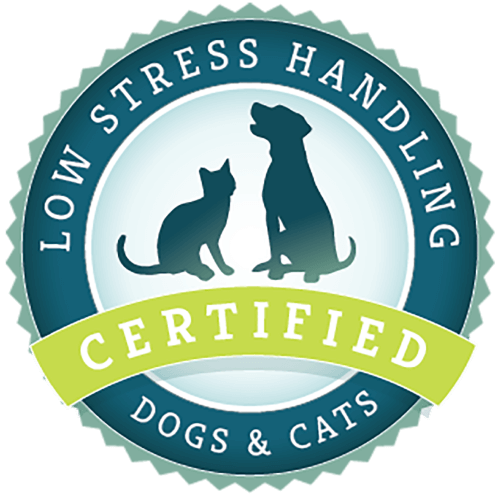What article are you looking for?
Category: Book and Product Reviews
Treat & Train® Used in College Classroom by Animal Behavior Students
When pet owners and trainers think about the Treat&Train®, generally what comes to mind is how they can use the program for training their pet to behave better or for enrichment and training fun tricks. Another completely different but equally cool area where the Treat&Train is being used is in animal behavior research and as a teaching tool for animal behavior students! For instance, one professor, Dr. Christy Hoffman at Canisius College in Buffalo, New York, uses her dog, Santiago, and the Treat&Train in her class called Research Methods in Animal Behavior. Canisius College is one of a handful of schools in the US
Using the Treat & Train® Helps Pet Owners Train like Professionals
Story 1 Katie Kelly enlists the help of her neighbors to use the Treat&Train to help counter-condition her dog. Dog has a blast. In this story, Katie Kelly explains how she trained her dog, Minnie, to be comfortable and calm around Apartment Noises which had previously frightened her. Her full description was originally published in the Paws Abilities blog. I have used the Treat&Train with my dog, Minnie, to help with our recent moving situation. Previously, we have always had the luxury of private life in a house setting. However, recently we had to move into an apartment, which was an
Using the Treat & Train® to Teach Fearful Dogs to Feel Comfortable with New Visitors in the House
At the San Francisco SPCA Behavior Resources Department, board certified veterinary behaviorist, Dr. Jeanine Berger, and her behavior technician, Lisa Stinnett, RVT, deal with fearful and aggressive dogs successfully on a regular basis. Their success is due in-part to their deep body of knowledge as well as a broad tool box. One important tool they use is the Treat&Train®—a remote controlled food reward system for training dogs and cats. One unique way that they use the Treat&Train is to reward reactive dogs to become more comfortable around strangers in the home. Treat&Train Behavior technician Lisa Stinnett explains, “The owner is instructed to play
Weavin’ Woes: Using the Treat & Train® to Teach Independent Weave Pole Performance
Miley is my five-year old Shetland Sheepdog, she’s had a fun career and is a great agility partner. In 2010, we were selected to be one of the teams to compete at the European Open Agility Championship (EO) in the Czech Republic. At the European Open, there are two team runs (one is Standard, one is Jumpers), and two individual runs (one is standard and is jumpers). Her two individual runs were good and we qualified and ran in the Finals. After arriving home from the EO and gathering my thoughts, I decided to work on Miley’s weave poles because
Treat & Train® Training Helps Prepare Military and Police Dogs for High Risk Operations
Generally when one I think of dogs trained for military and police work, I envision toys as the primary motivator and choke chains and pinch collar corrections to keep the dogs in line. However, at least one police/military group in the Netherlands is training using more data-proven methods. Headed by Simon Prins, co-author of Canine Behavior Basics: A Manual for Proven Success in Operational Service Dog Training, this group’s training is based on solid principles of rewarding desired behavior (positive reinforcement), removing rewards for unwanted behavior (negative punishment), and building behaviors in little steps (shaping) so that behaviors can be learned
How the Treat & Train® is used in research on Canine Cognition Canine Cognition
One of the perks of lecturing around the world is that I get the opportunity to meet researchers and hear about their incredible studies. These are studies that shed light on how animals learn and perceive our world and consequently how we can better communicate and interact with them. These experiences are even more exciting when I find that the researchers are using the Treat&Train®, a remote controlled treat dispenser which I developed in 2004 to be used, especially where precision is needed in training. So, last year when I visited the Clever Dog Lab at the Messerli Research Institute in Vienna as well

Low Stress Handling® Silver-Level Certification
Individual Certification at this level demonstrates to clients and employers the individual’s dedicated interest in Low Stress Handling®. Hospital Certification at this level demonstrates to clients and staff the hospital’s commitment to appropriately training staff in Low Stress Handling® methods.
Learn More
